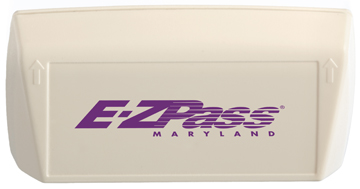State Surveying E-ZPass Holders on Express Toll Lanes

It’s June 17, 2024, and you’re sitting in bumper-to-bumper traffic on the Capital Beltway or Interstate 270.
On the other side of the concrete median, free-flowing express toll lanes are beckoning.
How much money would you be willing to pony up — and how much time would the toll lanes have to shave off your commute — before you decide to ditch the slow-poke lanes?
Those questions are at the heart of a survey that a research firm is conducting on behalf of the Maryland Department of Transportation and the Maryland Transportation Authority.
Resource Systems Group, a Vermont-based consulting and analytics firm, is polling a sampling of EZPass transponder holders in Maryland and Virginia, to gauge drivers’ willingness to use toll lanes of the sort that Gov. Lawrence J. Hogan Jr. (R) wants to build on the two roads.
Parts of the Beltway in Virginia already have such lanes. Hogan wants to have private sector firms finance, build and maintain express toll lanes in Maryland.
“The purpose of the Stated Preference Survey is to develop estimates of a traveler’s value of time and propensity of travelers to use the proposed managed lanes on I-495 and/or I-270,” Lisa Choplin, I-495 and I-270 P3 program director, said in response to questions emailed by Maryland Matters.
“Stated preference surveys are an important part of investment-grade traffic and revenue studies that estimate motorists’ values of time, for different traveler market segments. The surveys provide an important analytical tool, and are needed to secure financing from federal loan programs, such as the Transportation Infrastructure Finance and Innovation Act (TIFIA).”
The meat of the survey offers motorists a series of hypotheticals. After asking the respondent to recall the last time he or she took a trip of more than 15 minutes duration on the Beltway or 270 (and whether there was heavy traffic during that trip), RSG then probes how the person would handle hypothetical future commutes in a world where express toll lanes are an option.
“Below are 2 different travel options for making the work-related business trip you have just described,” the survey says.
“If the options below were the only options available for your trip, which would you most prefer:
Use the Regular Lanes on I-495
Travel Time: 27 minutes
Toll Cost: No Toll
[or]
Use the Express Lanes on I-495
Travel Time: 13 minutes
Toll Cost: $4.00.”
Respondents can then select the option they prefer.
Follow-up questions are similar in format but have slightly different travel time and toll options.
A trip of 28 minutes with no toll versus a 15-minute trip with a $5 toll.
A trip of 28 minutes with no toll versus a 19-minute trip with a $2 toll.
A 22-minute free trip versus a 17-minute trip with a $6 toll.
And so on.
There is language suggesting that different respondents were offered different choices.
The survey also seeks insight into when motorists would be “most likely” to use express toll lanes. Among the available options: “when it’s rush hour,” “when I’m worried about arriving somewhere.. on time,” “when the regular lanes are congested,” “when I’m running late,” etc.
And respondents are asked for their feelings about the Hogan administration’s proposal to add express lanes on the two roads. Options range from “strongly favor” to “strongly opposed.”
Not all motorists who have EZPass transponders received an invitation to participate in the survey.
“We used a random selection of Maryland E-ZPass and Virginia E-ZPass customers in different ZIP codes within the study area,” Choplin said in response to a question.
Tony Hausner, a longtime Silver Spring resident who is active with the group Citizens Against Beltway Expansion, faulted the survey for not focusing on other methods the state might utilize to help people shorten their commutes.
“It only asks about highway solutions,” he said. “It’s not asking about increased transit opportunities — carpool lanes, express bus, [bus rapid transit], increased MARC service from Frederick, reversible lanes.
“Those are options that I think are worth exploring as well.”
Choplin defended the state’s methodology. “This is not a public opinion survey.
“Even though the beginning slides of the public facing survey seem more general, the purpose of the survey is to obtain specific data to support analysis for a key input — value of time — for the traffic and revenue study.”
The survey will close on July 12, assuming that a minimum of 2,000 completed questionnaires have been submitted. Choplin said the state wants at least 500 from each of the four study areas: I-495 from the American Legion Bridge to I-95, I-495 from U.S. 50 to MD 5, I-495 from I-95 to U.S. 50 and I-270 from I-495 to I-370.




 Creative Commons Attribution
Creative Commons Attribution